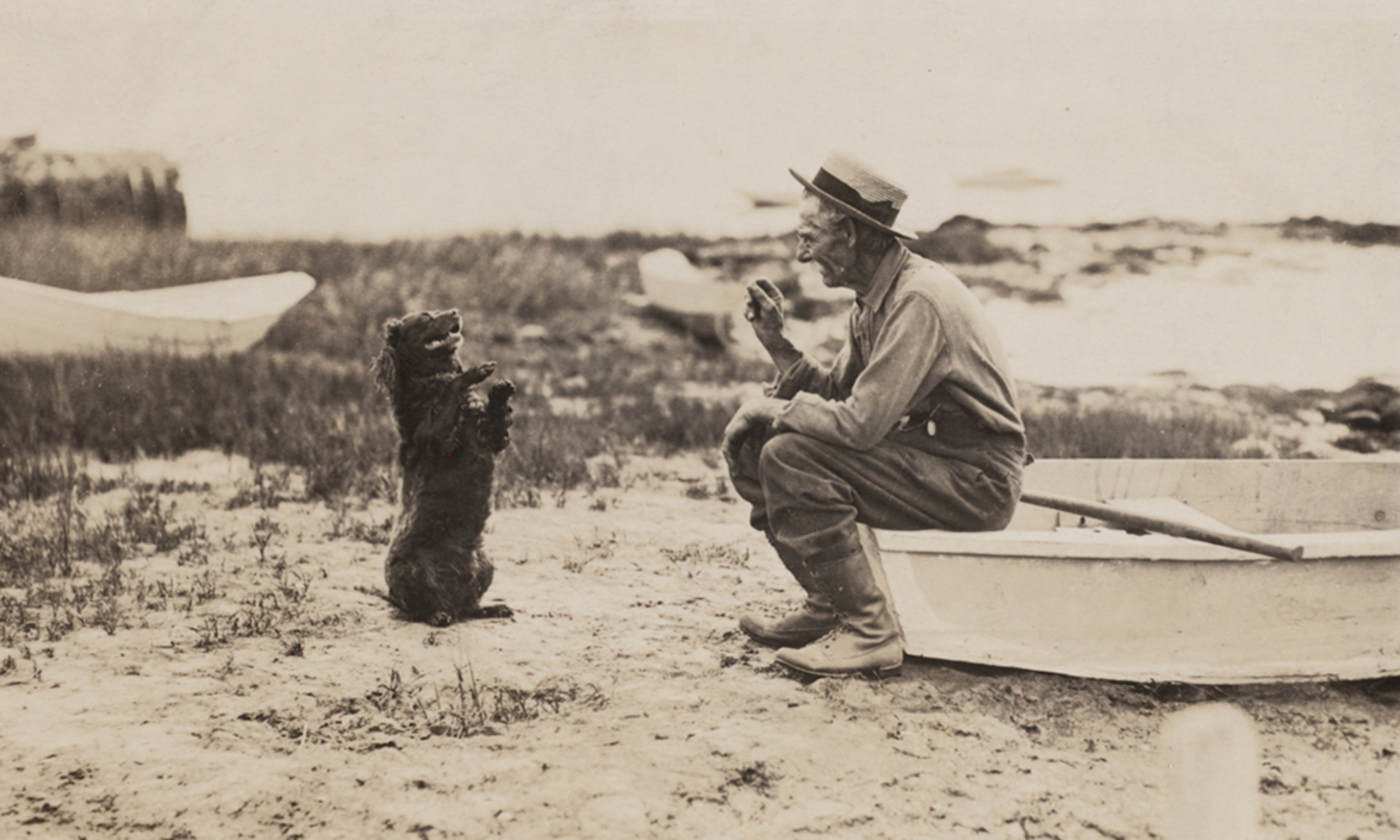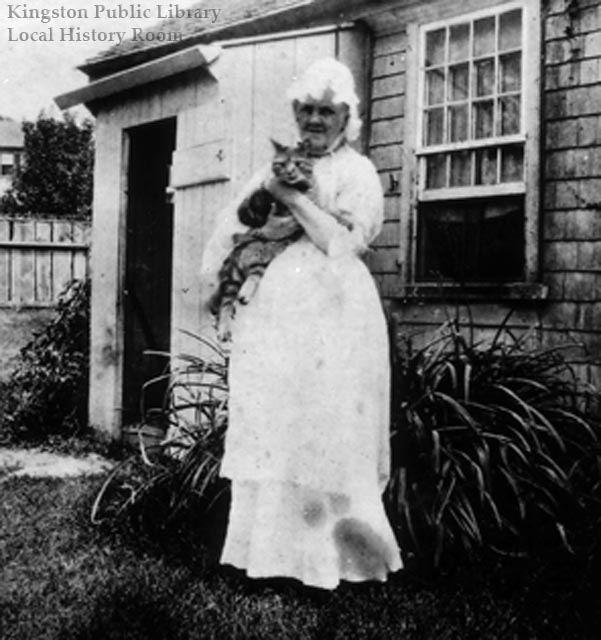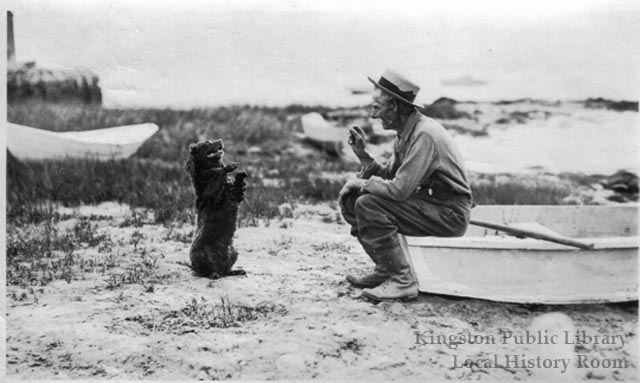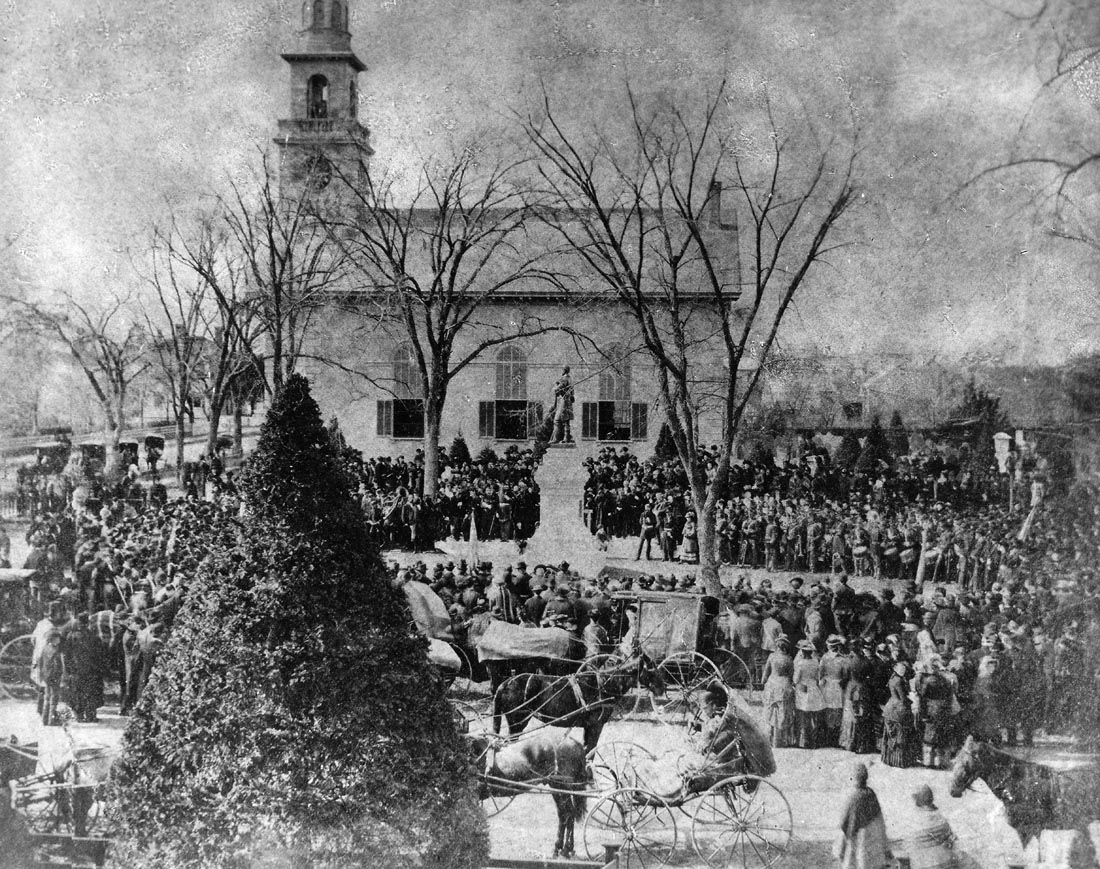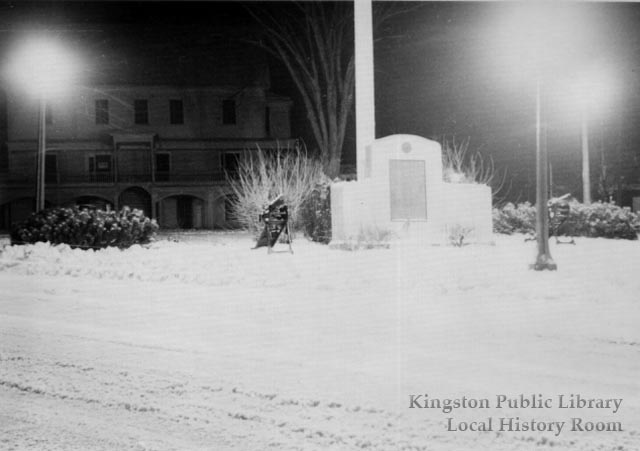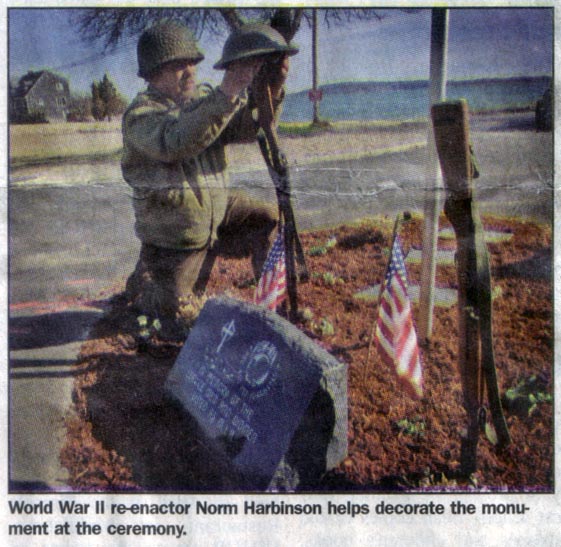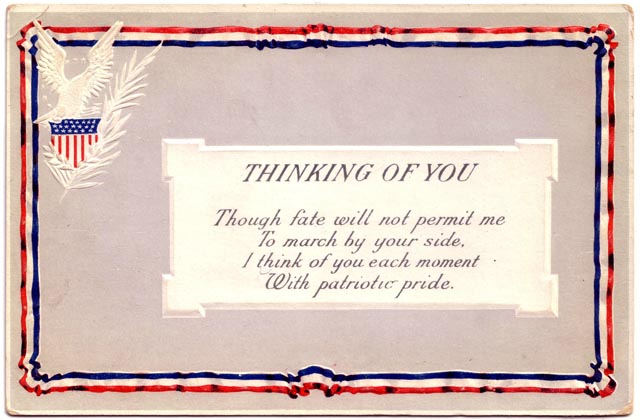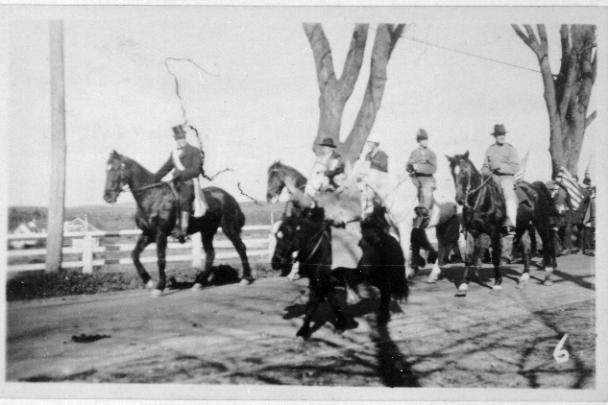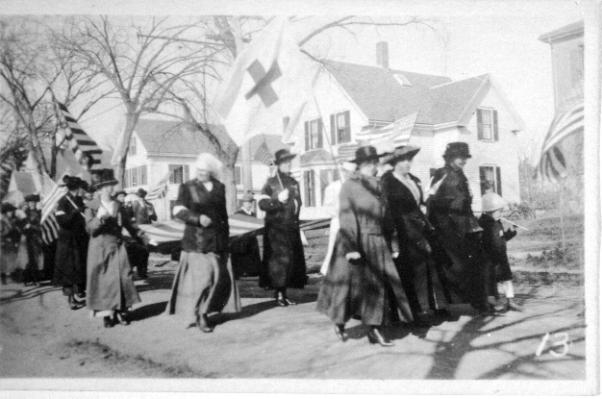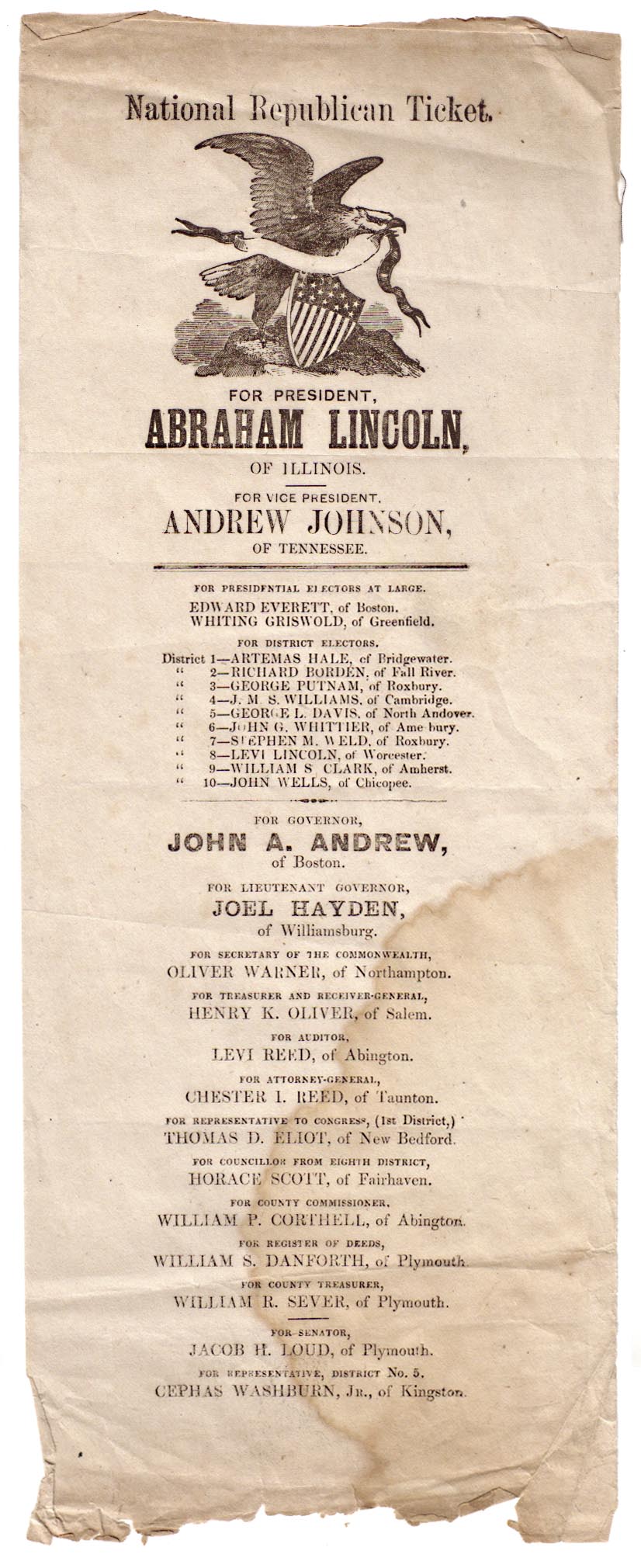In 1875 Kingston celebrated with a Grand Thanksgiving Ball on November 25.
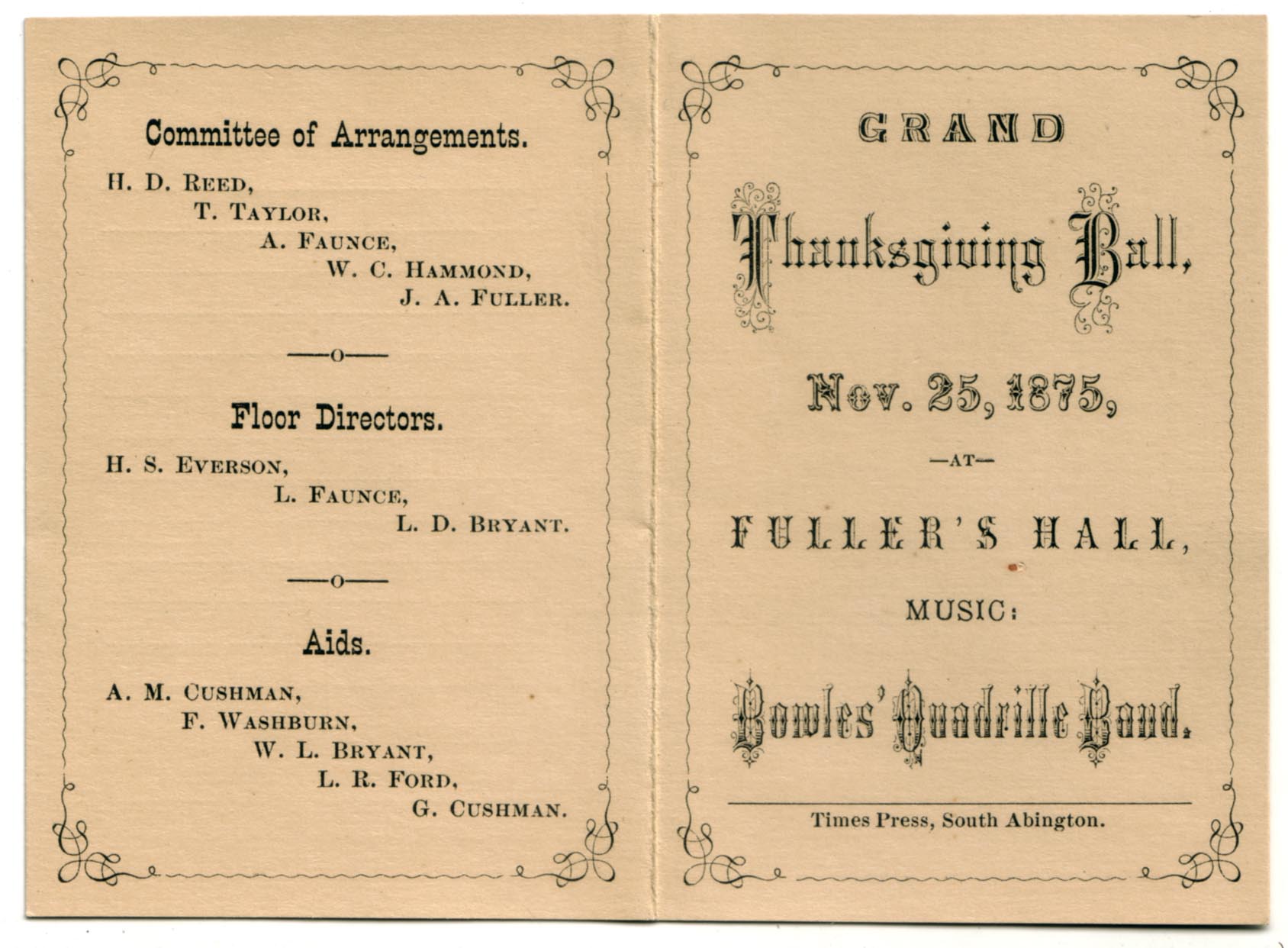
This dance card tells us that Bowle’s Quadrille Band played 17 numbers, 14 of which were listed as quadrilles. This was not as unvaried as it might sound, as there were lots of types of quadrilles: the Grand Thanksgiving Ball offered three Plain, two Lancers and and two Polkas Redowa, along with a Caledonia, a Schottishe, a Portland Fancy, a Ladies’ Choice and a Waltz.
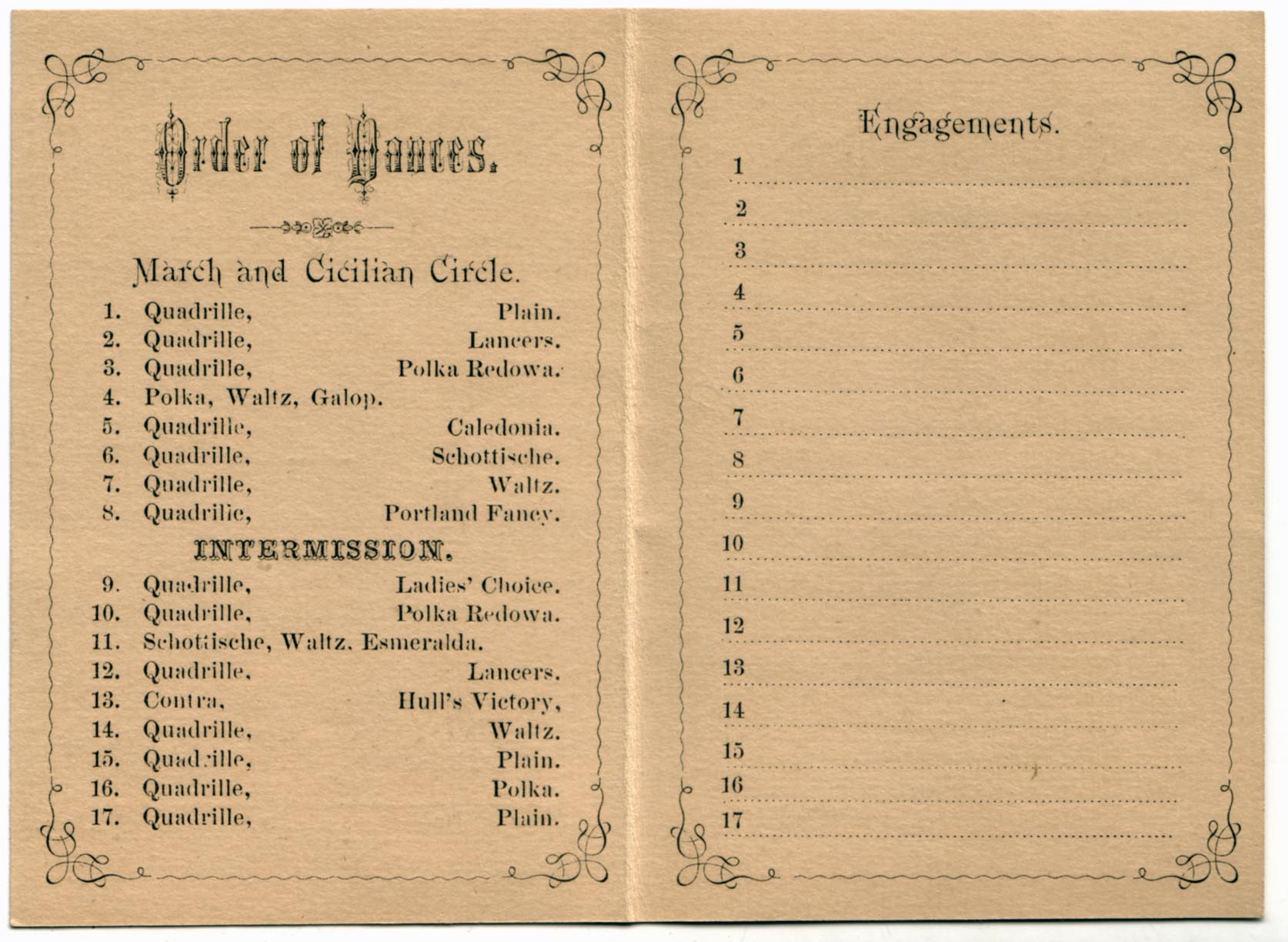
The quadrille is a dance for four couples arranged in a square, a nice description, but to see one in action, take a look at this video from “An American Ballroom Companion, Dance Instruction Manuals, ca. 1490-1920” on the American Memory website of the Library of Congress. The collection overview details the history of social dancing and the rituals of a ball like Kingston’s extravaganza in the section on “Nineteenth Century Social Dance.” Interested parties may investigate and report back in the comments exactly what the floor directors and aids did at the ball. (If you haven’t had the chance to explore it before, American Memory is exceptional and for the history fan, completely addictive!)
Kingston’s Grand Thanksgiving Ball took place at Fuller’s Hall, located on the corner of Main Street and Maple Avenue. Originally built as the first Baptist meeting house in 1806, by 1835 the building housed a foundry. Later the upper gallery was extended to create a full second storey where clothing was manufactured, and by the 1870s this second floor had become a meeting place for groups such as the Temperance Society and a public hall for events like the Grand Thanksgiving Ball.
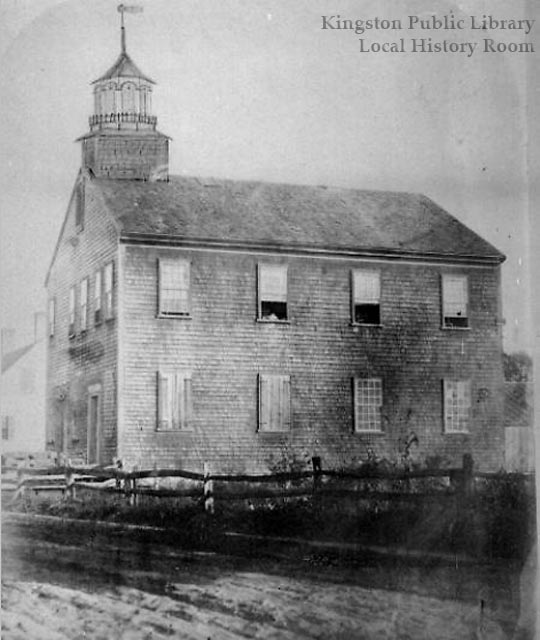
In this photograph, the belfrey, removed in 1835, has been helpfully penciled back in. Around 1900, Fuller’s Hall burned and within a decade, the residence at 248 Main Street was built.
Sources: Library of Congress, American Memories; Emily Fuller Drew’s notecards on lantern slides.
